- Stephen Crane
by Satya
Stephen Crane’s horoscope explains the urgency in his writing and the darkness he could never quite escape
- Charles Dickens – Rectification
by Doctor H
Dickens’s unmistakably goat-like appearance and dynamic hits to key Arabic lots help secure his rectified birth time
- Leonardo da Vinci
by Satya
From the Sforza horse to the Mona Lisa, Leonardo’s birth chart explains why he was never finished — only reaching for the next refinement
- A Fatal Law: Medieval Europe and the Astrological Renaissance
by Geoffrey Ballinger
Reintroduced to the Latin West in the 12th century, astrology positioned man at the center of the vast universe, and inspired Renaissance thinkers to investigate — and eventually uproot — concepts that had held sway for centuries
- Pearl Buck – Rectification
by Doctor H
Buck’s round face and the Jupiter–Ascendant timing of The Good Earth help confirm her birth time
- Lesson 1: The Birth Chart
by Satya
Welcome to Lesson 1. You will learn the core building blocks you need to read a natal chart. We start with the seven classical planets that are visible to the eye: Saturn, Jupiter, Mars, Sun, Venus, Mercury, and Moon. You will learn their names and glyphs. You will also see the lunar nodes (North Node…
Continue reading Lesson 1: The Birth Chart
- Stephen Crane – Rectification
by Doctor H
Venus in fall in the 12th, Scorpio look, and the Blackwood war assignment at Guantanamo Bay all help lock Crane’s birth chart
- Traditional Birth Chart in astro-seek.com
by Satya
Learn how to cast your traditional birth chart for free using astro-seek.com. Follow our step-by-step guide with Charles Dickens’ birth chart as an example!
- The Twelfth House in Astrology
by John Gadbury
Known as Kakodaimon—the “evil spirit”—this house speaks of exile, captivity, and loss
- Of the Planet Moon
by John Gadbury
The Moon, mistress of change, stirs feeling, memory, and the tides of daily life
- Of the Planet Mercury
by John Gadbury
Where Mercury is strong, words are keen, hands are skillful, and learning comes swiftly
- Alexander Magnus
by John Gadbury
Alexander’s birth chart reveals a destiny carved by ambition, courage, and a death shrouded in celestial mystery
- The Eleventh House in Astrology
by John Gadbury
The Eleventh House, called the “House of Good Spirit,” reveals our friends, hopes, and the blessings that come through them
- Ralph Waldo Emerson – Rectification
by Doctor H
Mercury–Ascendant directions and South Node–Midheaven contacts clinch Emerson’s rectified birth time
- Hannah Arendt – Rectification
by Doctor H
An Aquarius Midheaven, Fortune in Saturn’s Leo bound, and the 12th-house Lot of Accusation/Exile/Injury guide the final birth-time determination
- The Tenth House in Astrology
by John Gadbury
Known as the “Heart of the Sky,” the Tenth House reveals profession, dignity, public standing, and the native’s worldly success
- The Ninth House in Astrology
by John Gadbury
The Ninth House reveals religion, long journeys, higher learning, visions, and the pursuit of wisdom
- The Eighth House in Astrology
by John Gadbury
The Eighth House governs death, inheritance, and the sorrows tied to endings and legacies
- Nero Caesar
by John Gadbury
A chilling portrait of Nero’s crimes—written in the stars before they were written in history
- Srinivasan Ramanujan – Rectification
by Doctor H
Cancer rising, a dark countenance, and the historic letter to Hardy all help confirm Ramanujan’s exact birth time
- Of the Planet Venus
by John Gadbury
Venus adorns the nativity with harmony, elegance, music, and the power to enchant
- Of the Planet Jupiter
by John Gadbury
Jupiter’s influence brings expansion, prosperity, and the generous flow of fortune and wealth
- Of the Planet Mars
by John Gadbury
Mars marks professions of battle and blade—soldiers, surgeons, smiths, and all who move through fire and risk
- Of the Planet Sun
by John Gadbury
When the Sun shines strong, it lifts the native with honor, steadfast character, and enduring fame
- Of the Planet Saturn
by John Gadbury
The ancient astrologers called him the highest of planets—for Saturn governs time, toil, and the turning of fate
- The Seventh House in Astrology
by John Gadbury
The Seventh House speaks of marriage, partnerships, legal disputes, and open enemies—revealing both harmony in union and strife in confrontation
- The Sixth House in Astrology
by John Gadbury
In the Sixth House we find the trials of health, the loyalty or betrayal of servants, and the fortunes tied to humble work and animals
- The Fifth House in Astrology
by John Gadbury
The Fifth House reveals children and joy—love, arts, celebration, and messages—showing fertility, pleasure, and honors gained through creativity, diplomacy, and the delights that light a life.
- The Fourth House in Astrology
by John Gadbury
The Fourth House governs home, land, inheritance, and ancestry, revealing both the native’s roots and the ultimate conclusion of all matters in life
- The Third House in Astrology
by John Gadbury
The Third House unveils the bonds between siblings, the nature of short journeys, and how everyday communications and neighborhood ties shape a life of connection and familiarity.
- The Second House in Astrology
by John Gadbury
The Second House reveals how we earn, manage, and sometimes lose our wealth—through labor, legacy, marriage, or misfortune.
- The First House in Astrology
by John Gadbury
The First House reveals your body, mind, and character. Discover how planets and house rulers here shape your appearance, health, personality, and path through life.
- Benefic and Malefic Planets
by Satya
In traditional astrology, planets are either benefic or malefic, symbolizing life’s blessings and challenges. Jupiter and Venus nurture growth, while Saturn and Mars bring trials. Ptolemy’s insights reveal how their elemental nature shapes our experiences through balance and adversity.
- How to Cast Your Traditional Birth Chart for FREE
by Satya
Learn how to cast your traditional birth chart for free using astro.com. Follow our step-by-step guide with Charles Dickens’ birth chart as an example!
- Petrarch – Rectification
by Satya
His 1341 crowning as poet laureate and Cola Di Rienzo’s 1347 revolt are instrumental in pinpointing Petrarch’s exact birth time.
- Saturn in Libra: Petrarch
by Satya
Compared to Tilak’s Mars in detriment in Libra, Petrarch has Saturn exalted in Libra in the third house. A planet in exaltation has the power of dignity, esteem, and honor. During his travels in 1345, Petrarch found Cicero’s letters to Atticus, Quintus, and Brutus. This discovery is often associated with the start of humanism in…
Continue reading Saturn in Libra: Petrarch
- Scorpio: The Scorpion
by Geoffrey Ballinger
The currents run deep with the fixed water sign of Scorpio, whose nocturnal martial nature channels elements of both its invertebrate namesake and the soaring eagle.
- The Tropical Zodiac
by Satya
The development of the zodiac around the fifth century B.C. was an important milestone in the history of astrology. The path of the Sun, the Moon, and the planets around the Earth, also known as the ecliptic, was divided into 360 degrees, with 30 degrees allotted to each of the 12 signs. The signs were…
Continue reading The Tropical Zodiac
- Synodic Cycle of the Superior Planets
by Satya
The synodic cycle of the superior planets (Mars, Jupiter, and Saturn) starts at the conjunction of the planet with the Sun and being Cazimi. Cazimi makes a planet very strong but it will soon move to being combust. The combust zone extends to around eight degrees and 30 minutes from the Sun. Here the planet…
Continue reading Synodic Cycle of the Superior Planets
- Essential Dignities: The School Analogy
by Satya
Imagine that there are twelve schools, each with three hundred students. These schools are like the signs of the zodiac, with each school specializing in different subjects and skills. The Aries school teaches its students how to be aggressive, fight, and succeed in war. The Aquarius school teaches science and is concerned with humanity. The…
Continue reading Essential Dignities: The School Analogy
- Libra: The Scales
by Geoffrey Ballinger
As day and night reach equal measure during the autumn equinox, the Venus-ruled air sign of Libra espouses the civilized virtues of balance, harmony, and coexistence.
- Table of Essential Dignities
by Satya
The signs act as homes or residences for the planets. Based on the sign and degree it occupies, a planet is bestowed with or denied certain gifts, powers, or resources. This is essential dignity, a measure of the strength or weakness of a planet. Essential dignity is one of the most important techniques in traditional…
Continue reading Table of Essential Dignities
- Leonardo da Vinci’s Moon Firdaria: A Benevolent Birth
by Satya
Conjunct the greater benefic Jupiter in rulership, in mutual reception with the lesser benefic Venus and free from malefic rays, Leonardo’s Piscean moon promises a benevolent childhood. Placed in the fourth whole sign house in the exalted bound of Venus/Pisces and applying to the Sun in Taurus shapes Leonardo’s childhood experiences, his connection to nature and country life and the nurturing of his scientific mind.
- Virgo: The Maiden
by Geoffrey Ballinger
A mutable earth sign serving as both the exaltation and domicile of Mercury, the Maiden extols the virtues of practicality, fastidiousness, and support, lending her considerable analytical talents to whatever job is at hand
- A Matter of Degree: Worldview in Elizabethan England
by Geoffrey Ballinger
Shaped by elements of Christian and ancient Greek thought, the Elizabethan worldview envisioned the universe as a balance between heavenly order and sinful chaos, with man the pivotal link in the chain of being.
- Abu Ma’shar: Persian Prince of Astrology
by Geoffrey Ballinger
Initially a student of the sayings of the Prophet Muhammed, Abu Ma’shar went from prominent skeptic to one of Islam’s greatest Medieval astrologers and was responsible for preserving and synthesizing both Persian and Hellenistic techniques and philosophies.
- Leo: The Lion
by Geoffrey Ballinger
Endowed with the heat of the summer Sun, the fixed fire sign of Leo shines through leadership and unique self-expression, although the regal Lion may succumb to vanity and dogma.
- Cancer: The Crab
by Geoffrey Ballinger
A hard shell, grasping claws and cautious approach protect the gentle, receptive interior of Cancer, the cardinal water sign. But it is the Moon-ruled sign’s symbolic relationship to the Sun and the nourishing role of emotional care that reveal its essential nature.
- The Sun: The Diurnal Luminary
by Alexandre Dias
Sitting on its throne in the heavens, the Sun’s movement designates day and night, light and dark, winter and summer, truth and lies, carving the ecliptic, the basis of the zodiac and the art of astrology, across the sky.
- Gemini: The Twins
by Geoffrey Ballinger
Mentally agile and curious, the mutable, Mercury-ruled air sign of Gemini gathers information, synthesizes, and reports. But at its mythological roots, this sign’s capacity to be two things at once reveals the unifying power of companionship.
- 2022 June – Gemini season and Saturn retrograde
by Satya
Saturn turns retrograde early this month and Mercury turns direct. Both Mercury and Venus transiting Gemini and in a sextile aspect to the greater benefic Jupiter make this a very social month.
- In the Footsteps of Angels: Medieval Arabic Astrology
by Geoffrey Ballinger
As the newly formed Muslim caliphate extended beyond the Arabian Peninsula, it encountered Persian, Hellenistic, and Indian forms of astrology, integrating them into a refined science that would reach its medieval peak in Baghdad, a city whose fortune and fate would be foretold by the stars.
- Taurus: The Bull
by Geoffrey Ballinger
The fixed earth sign of Taurus represents the forward momentum of spring, with its placid nature and capacity for creation. But while the Bull’s impulse is toward taking root and building, if its Venusian peace is disturbed it can become a destructive force not to be trifled with.
- 2022 May – Jupiter Aries ingress and a lunar eclipse
by Satya
Jupiter ingresses into Aries in May, setting up a generosity with Mars in Pisces that leads to the ominous May 16 total lunar eclipse along with a retrograde Mercury.
- The Moon: The Nocturnal Luminary
by Alexandre Dias
As the luminary that rules the night, the Moon represents change, travel, the emotional or irrational soul and feminine energy, but its significations depend on its condition in the sky and its proximity to the earthly sphere.
- Aries: The Ram
by Geoffrey Ballinger
Filled with the vitality of spring, Aries is the sign of new beginnings. While the Ram rushes forward to meet any challenge head-on, the flame of this cardinal fire sign peters out just as quickly as it is lit.
- 2022 April – Jupiter heliacal rising and a Solar eclipse
by Satya
Jupiter makes his first appearance in the eastern sky in April and, with Venus also in Pisces, compassion and sensitivity are heightened this month. At the end of the month, we see the bound of Mercury/Taurus activated by the year’s first solar eclipse.
- Firmicus Maternus: A skeptic among the stars
by Alexandre Dias
A lawyer turned astrologer turned devout Christian, Firmicus Maternus penned the eight-book Mathesis, one of the lengthiest extant works on Hellenistic astrology in Latin, giving sixteen centuries of readers insight into astrological practices during the Roman Empire.
- Vettius Valens: Soldier of Fate
by Geoffrey Ballinger
Know to the Arabs as “Al-Rumi”, Vettius Valens gained near-mythical status in the East while his fame was largely eclipsed by Ptolemy in the West but his Anthologies remains the most important source contemporary readers have for the foundations and techniques of Hellenistic astrology.
- 2022 March – Saturn heliacal rising
by Satya
After disappearing below the horizon for six weeks, Saturn will make a heliacal rising early this month in the sign of Aquarius. Read on to learn all the major action happening in the March skies.
- Claudius Ptolemy: A Sage Head in the Clouds
by Geoffrey Ballinger
The works of Hellenistic polymath Ptolemy of Alexandria outlined the Western view of the cosmos that would survive until the Copernican revolution and defined the rational-causal view of astrology still largely ascribed to today.
- Venus: The Lesser Benefic
by Alexandre Dias
Beauty, pleasure, and love: the incarnation of the Greco-Roman goddess of love, Venus, the Lesser Benefic brings joy to the life of the native if well-placed, and over-indulgence if ill-aligned.
- Pisces: The Fish
by Geoffrey Ballinger
Sensitive and spiritually magnanimous, watery Pisces is represented by two fish bound by a cord, representing the duality implicit in this mutable sign.
- Leonardo da Vinci – Rectification
by Satya
Mounting the copper orb on Florence Cathedral’s dome, a sodomy charge and a letter from Milan’s ambassador help to ascertain Leonardo da Vinci’s exact birth time.
- Hellenistic Astrology: Rationalizing Fate
by Geoffrey Ballinger
Merging Babylonian star worship with indigenous Egyptian astronomy and Greek mathematics and philosophy, Hellenistic astrologers crafted the fourfold technical structure of astrology that weathered two millennia to survive as the foundational elements of modern astrology today.
- Mercury: The Messenger
by Alexandre Dias
Speedy and unpredictable, the twinkling planet Mercury has long represented reason, commerce, and the pursuit of knowledge, and is distinct in its openness to the influence of other heavenly bodies.
- Mars: The Lesser Malefic
by Alexandre Dias
Mars, the blood-red warrior, blazes across the night sky, the harbinger of death, destruction, and strife. But the lesser malefic is not all bad: if dignified, the martial planet becomes the protector of the weak, the signifier of a courageous struggle, a victory against all odds that brings many rewards.
- The Fault in our Stars: Marcus Manilius and Western Astrology
by Geoffrey Ballinger
As the Roman Empire rose, absorbing the trappings of Hellenistic culture, one writer penned the oldest surviving complete treatise on the art of astrology. Part poetics, part mathematics, Manilius’ Astronomica offers a glimpse of the core concepts and Stoic philosophy underlying both Hellenistic astrology and the beginning of modern Western science.
- Astrology, Power and the Roman World
by Alexandre Dias
In the Roman Empire, knowledge of the stars could get you killed—or help you kill others. Discover how the science of reading the heavens became a powerful political tool in the Roman world.
- Capricorn: The Goatfish
by Geoffrey Ballinger
The profound wisdom of Ea, the ancient “antelope of the ocean”, and the influence of rule-loving Saturn give this sign its staid and hardworking nature as the steadfast Capricorn climbs ever higher up the mountain peak of life.
- Saturn: The Greater Malefic
by Alexandre Dias
The cold, dry ruler of Aquarius and Capricorn, the furthest of the visible planets represents limits and strife, the march of time, and the inevitability of death. But, when faced with dignity, even the darkest saturnine theme has the potential to teach profound lessons.
- The First House
by Satya
As the house on the eastern horizon, the first house concerns the vitality and primary motivations of the native, with planets in the first house, the houses they rule, and the placement of the ruler of the first house unlocking everything from a native’s physical characteristics to the expression of their talents.
- Heavenly Writings: The Babylonian Origins of Astrology
by Geoffrey Ballinger
Over three millennia ago, Mesopotamian scholar-scribes recorded the path of the heavenly bodies across the sky to decipher omens from the gods, laying the foundation for what would become Hellenistic astrology.
- Sagittarius: The Archer
by Geoffrey Ballinger
Like the mutable flames of a wildfire, Sagittarius blazes through life with enthusiasm and curiosity, eschewing limits to exploration as the far-sighted Archer fixes their sights on a distant future.
- Jupiter: The Greater Benefic
by Alexandre Dias
Magnanimous, expansive, kingly: the Greater Benefic takes many of its qualities from its namesake Jupiter, the Greco-Roman king of the gods. Abundance is key to this sanguine planet, as is power, representing the native’s fortune and success but signifying despotic attitudes or wastefulness when poorly placed.
- Aquarius: The Water Bearer
by Geoffrey Ballinger
From the flooded banks of the Nile to the brimming beaker of Science, the Water Bearer brings with it an impartial generosity and detached humanist perspective. But to reach its true potential, this fixed air sign must operate within its own structure, no matter how abstract.
 by SatyaStephen Crane’s horoscope explains the urgency in his writing and the darkness he could never quite escape
by SatyaStephen Crane’s horoscope explains the urgency in his writing and the darkness he could never quite escape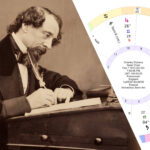 by Doctor HDickens’s unmistakably goat-like appearance and dynamic hits to key Arabic lots help secure his rectified birth time
by Doctor HDickens’s unmistakably goat-like appearance and dynamic hits to key Arabic lots help secure his rectified birth time by SatyaFrom the Sforza horse to the Mona Lisa, Leonardo’s birth chart explains why he was never finished — only reaching for the next refinement
by SatyaFrom the Sforza horse to the Mona Lisa, Leonardo’s birth chart explains why he was never finished — only reaching for the next refinement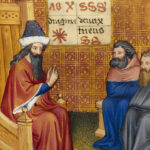 by Geoffrey BallingerReintroduced to the Latin West in the 12th century, astrology positioned man at the center of the vast universe, and inspired Renaissance thinkers to investigate — and eventually uproot — concepts that had held sway for centuries
by Geoffrey BallingerReintroduced to the Latin West in the 12th century, astrology positioned man at the center of the vast universe, and inspired Renaissance thinkers to investigate — and eventually uproot — concepts that had held sway for centuries by Doctor HBuck’s round face and the Jupiter–Ascendant timing of The Good Earth help confirm her birth time
by Doctor HBuck’s round face and the Jupiter–Ascendant timing of The Good Earth help confirm her birth time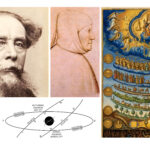 by SatyaWelcome to Lesson 1. You will learn the core building blocks you need to read a natal chart. We start with the seven classical planets that are visible to the eye: Saturn, Jupiter, Mars, Sun, Venus, Mercury, and Moon. You will learn their names and glyphs. You will also see the lunar nodes (North Node… Continue reading Lesson 1: The Birth Chart
by SatyaWelcome to Lesson 1. You will learn the core building blocks you need to read a natal chart. We start with the seven classical planets that are visible to the eye: Saturn, Jupiter, Mars, Sun, Venus, Mercury, and Moon. You will learn their names and glyphs. You will also see the lunar nodes (North Node… Continue reading Lesson 1: The Birth Chart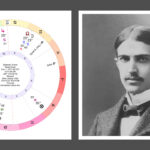 by Doctor HVenus in fall in the 12th, Scorpio look, and the Blackwood war assignment at Guantanamo Bay all help lock Crane’s birth chart
by Doctor HVenus in fall in the 12th, Scorpio look, and the Blackwood war assignment at Guantanamo Bay all help lock Crane’s birth chart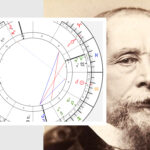 by SatyaLearn how to cast your traditional birth chart for free using astro-seek.com. Follow our step-by-step guide with Charles Dickens’ birth chart as an example!
by SatyaLearn how to cast your traditional birth chart for free using astro-seek.com. Follow our step-by-step guide with Charles Dickens’ birth chart as an example! by John GadburyKnown as Kakodaimon—the “evil spirit”—this house speaks of exile, captivity, and loss
by John GadburyKnown as Kakodaimon—the “evil spirit”—this house speaks of exile, captivity, and loss by John GadburyThe Moon, mistress of change, stirs feeling, memory, and the tides of daily life
by John GadburyThe Moon, mistress of change, stirs feeling, memory, and the tides of daily life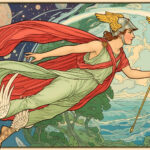 by John GadburyWhere Mercury is strong, words are keen, hands are skillful, and learning comes swiftly
by John GadburyWhere Mercury is strong, words are keen, hands are skillful, and learning comes swiftly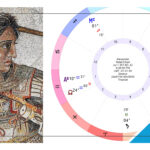 by John GadburyAlexander’s birth chart reveals a destiny carved by ambition, courage, and a death shrouded in celestial mystery
by John GadburyAlexander’s birth chart reveals a destiny carved by ambition, courage, and a death shrouded in celestial mystery by John GadburyThe Eleventh House, called the “House of Good Spirit,” reveals our friends, hopes, and the blessings that come through them
by John GadburyThe Eleventh House, called the “House of Good Spirit,” reveals our friends, hopes, and the blessings that come through them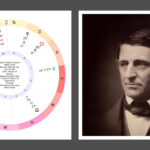 by Doctor HMercury–Ascendant directions and South Node–Midheaven contacts clinch Emerson’s rectified birth time
by Doctor HMercury–Ascendant directions and South Node–Midheaven contacts clinch Emerson’s rectified birth time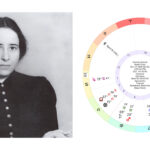 by Doctor HAn Aquarius Midheaven, Fortune in Saturn’s Leo bound, and the 12th-house Lot of Accusation/Exile/Injury guide the final birth-time determination
by Doctor HAn Aquarius Midheaven, Fortune in Saturn’s Leo bound, and the 12th-house Lot of Accusation/Exile/Injury guide the final birth-time determination by John GadburyKnown as the “Heart of the Sky,” the Tenth House reveals profession, dignity, public standing, and the native’s worldly success
by John GadburyKnown as the “Heart of the Sky,” the Tenth House reveals profession, dignity, public standing, and the native’s worldly success by John GadburyThe Ninth House reveals religion, long journeys, higher learning, visions, and the pursuit of wisdom
by John GadburyThe Ninth House reveals religion, long journeys, higher learning, visions, and the pursuit of wisdom by John GadburyThe Eighth House governs death, inheritance, and the sorrows tied to endings and legacies
by John GadburyThe Eighth House governs death, inheritance, and the sorrows tied to endings and legacies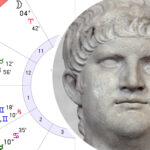 by John GadburyA chilling portrait of Nero’s crimes—written in the stars before they were written in history
by John GadburyA chilling portrait of Nero’s crimes—written in the stars before they were written in history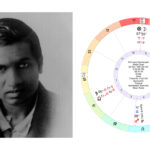 by Doctor HCancer rising, a dark countenance, and the historic letter to Hardy all help confirm Ramanujan’s exact birth time
by Doctor HCancer rising, a dark countenance, and the historic letter to Hardy all help confirm Ramanujan’s exact birth time by John GadburyVenus adorns the nativity with harmony, elegance, music, and the power to enchant
by John GadburyVenus adorns the nativity with harmony, elegance, music, and the power to enchant by John GadburyJupiter’s influence brings expansion, prosperity, and the generous flow of fortune and wealth
by John GadburyJupiter’s influence brings expansion, prosperity, and the generous flow of fortune and wealth by John GadburyMars marks professions of battle and blade—soldiers, surgeons, smiths, and all who move through fire and risk
by John GadburyMars marks professions of battle and blade—soldiers, surgeons, smiths, and all who move through fire and risk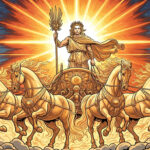 by John GadburyWhen the Sun shines strong, it lifts the native with honor, steadfast character, and enduring fame
by John GadburyWhen the Sun shines strong, it lifts the native with honor, steadfast character, and enduring fame by John GadburyThe ancient astrologers called him the highest of planets—for Saturn governs time, toil, and the turning of fate
by John GadburyThe ancient astrologers called him the highest of planets—for Saturn governs time, toil, and the turning of fate by John GadburyThe Seventh House speaks of marriage, partnerships, legal disputes, and open enemies—revealing both harmony in union and strife in confrontation
by John GadburyThe Seventh House speaks of marriage, partnerships, legal disputes, and open enemies—revealing both harmony in union and strife in confrontation by John GadburyIn the Sixth House we find the trials of health, the loyalty or betrayal of servants, and the fortunes tied to humble work and animals
by John GadburyIn the Sixth House we find the trials of health, the loyalty or betrayal of servants, and the fortunes tied to humble work and animals by John GadburyThe Fifth House reveals children and joy—love, arts, celebration, and messages—showing fertility, pleasure, and honors gained through creativity, diplomacy, and the delights that light a life.
by John GadburyThe Fifth House reveals children and joy—love, arts, celebration, and messages—showing fertility, pleasure, and honors gained through creativity, diplomacy, and the delights that light a life. by John GadburyThe Fourth House governs home, land, inheritance, and ancestry, revealing both the native’s roots and the ultimate conclusion of all matters in life
by John GadburyThe Fourth House governs home, land, inheritance, and ancestry, revealing both the native’s roots and the ultimate conclusion of all matters in life by John GadburyThe Third House unveils the bonds between siblings, the nature of short journeys, and how everyday communications and neighborhood ties shape a life of connection and familiarity.
by John GadburyThe Third House unveils the bonds between siblings, the nature of short journeys, and how everyday communications and neighborhood ties shape a life of connection and familiarity. by John GadburyThe Second House reveals how we earn, manage, and sometimes lose our wealth—through labor, legacy, marriage, or misfortune.
by John GadburyThe Second House reveals how we earn, manage, and sometimes lose our wealth—through labor, legacy, marriage, or misfortune. by John GadburyThe First House reveals your body, mind, and character. Discover how planets and house rulers here shape your appearance, health, personality, and path through life.
by John GadburyThe First House reveals your body, mind, and character. Discover how planets and house rulers here shape your appearance, health, personality, and path through life. by SatyaIn traditional astrology, planets are either benefic or malefic, symbolizing life’s blessings and challenges. Jupiter and Venus nurture growth, while Saturn and Mars bring trials. Ptolemy’s insights reveal how their elemental nature shapes our experiences through balance and adversity.
by SatyaIn traditional astrology, planets are either benefic or malefic, symbolizing life’s blessings and challenges. Jupiter and Venus nurture growth, while Saturn and Mars bring trials. Ptolemy’s insights reveal how their elemental nature shapes our experiences through balance and adversity. by SatyaLearn how to cast your traditional birth chart for free using astro.com. Follow our step-by-step guide with Charles Dickens’ birth chart as an example!
by SatyaLearn how to cast your traditional birth chart for free using astro.com. Follow our step-by-step guide with Charles Dickens’ birth chart as an example! by SatyaHis 1341 crowning as poet laureate and Cola Di Rienzo’s 1347 revolt are instrumental in pinpointing Petrarch’s exact birth time.
by SatyaHis 1341 crowning as poet laureate and Cola Di Rienzo’s 1347 revolt are instrumental in pinpointing Petrarch’s exact birth time.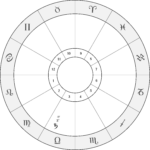 by SatyaCompared to Tilak’s Mars in detriment in Libra, Petrarch has Saturn exalted in Libra in the third house. A planet in exaltation has the power of dignity, esteem, and honor. During his travels in 1345, Petrarch found Cicero’s letters to Atticus, Quintus, and Brutus. This discovery is often associated with the start of humanism in… Continue reading Saturn in Libra: Petrarch
by SatyaCompared to Tilak’s Mars in detriment in Libra, Petrarch has Saturn exalted in Libra in the third house. A planet in exaltation has the power of dignity, esteem, and honor. During his travels in 1345, Petrarch found Cicero’s letters to Atticus, Quintus, and Brutus. This discovery is often associated with the start of humanism in… Continue reading Saturn in Libra: Petrarch by Geoffrey BallingerThe currents run deep with the fixed water sign of Scorpio, whose nocturnal martial nature channels elements of both its invertebrate namesake and the soaring eagle.
by Geoffrey BallingerThe currents run deep with the fixed water sign of Scorpio, whose nocturnal martial nature channels elements of both its invertebrate namesake and the soaring eagle.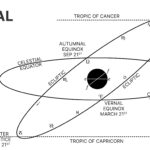 by SatyaThe development of the zodiac around the fifth century B.C. was an important milestone in the history of astrology. The path of the Sun, the Moon, and the planets around the Earth, also known as the ecliptic, was divided into 360 degrees, with 30 degrees allotted to each of the 12 signs. The signs were… Continue reading The Tropical Zodiac
by SatyaThe development of the zodiac around the fifth century B.C. was an important milestone in the history of astrology. The path of the Sun, the Moon, and the planets around the Earth, also known as the ecliptic, was divided into 360 degrees, with 30 degrees allotted to each of the 12 signs. The signs were… Continue reading The Tropical Zodiac by SatyaThe synodic cycle of the superior planets (Mars, Jupiter, and Saturn) starts at the conjunction of the planet with the Sun and being Cazimi. Cazimi makes a planet very strong but it will soon move to being combust. The combust zone extends to around eight degrees and 30 minutes from the Sun. Here the planet… Continue reading Synodic Cycle of the Superior Planets
by SatyaThe synodic cycle of the superior planets (Mars, Jupiter, and Saturn) starts at the conjunction of the planet with the Sun and being Cazimi. Cazimi makes a planet very strong but it will soon move to being combust. The combust zone extends to around eight degrees and 30 minutes from the Sun. Here the planet… Continue reading Synodic Cycle of the Superior Planets by SatyaImagine that there are twelve schools, each with three hundred students. These schools are like the signs of the zodiac, with each school specializing in different subjects and skills. The Aries school teaches its students how to be aggressive, fight, and succeed in war. The Aquarius school teaches science and is concerned with humanity. The… Continue reading Essential Dignities: The School Analogy
by SatyaImagine that there are twelve schools, each with three hundred students. These schools are like the signs of the zodiac, with each school specializing in different subjects and skills. The Aries school teaches its students how to be aggressive, fight, and succeed in war. The Aquarius school teaches science and is concerned with humanity. The… Continue reading Essential Dignities: The School Analogy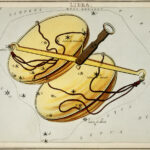 by Geoffrey BallingerAs day and night reach equal measure during the autumn equinox, the Venus-ruled air sign of Libra espouses the civilized virtues of balance, harmony, and coexistence.
by Geoffrey BallingerAs day and night reach equal measure during the autumn equinox, the Venus-ruled air sign of Libra espouses the civilized virtues of balance, harmony, and coexistence.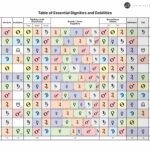 by SatyaThe signs act as homes or residences for the planets. Based on the sign and degree it occupies, a planet is bestowed with or denied certain gifts, powers, or resources. This is essential dignity, a measure of the strength or weakness of a planet. Essential dignity is one of the most important techniques in traditional… Continue reading Table of Essential Dignities
by SatyaThe signs act as homes or residences for the planets. Based on the sign and degree it occupies, a planet is bestowed with or denied certain gifts, powers, or resources. This is essential dignity, a measure of the strength or weakness of a planet. Essential dignity is one of the most important techniques in traditional… Continue reading Table of Essential Dignities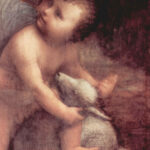 by SatyaConjunct the greater benefic Jupiter in rulership, in mutual reception with the lesser benefic Venus and free from malefic rays, Leonardo’s Piscean moon promises a benevolent childhood. Placed in the fourth whole sign house in the exalted bound of Venus/Pisces and applying to the Sun in Taurus shapes Leonardo’s childhood experiences, his connection to nature and country life and the nurturing of his scientific mind.
by SatyaConjunct the greater benefic Jupiter in rulership, in mutual reception with the lesser benefic Venus and free from malefic rays, Leonardo’s Piscean moon promises a benevolent childhood. Placed in the fourth whole sign house in the exalted bound of Venus/Pisces and applying to the Sun in Taurus shapes Leonardo’s childhood experiences, his connection to nature and country life and the nurturing of his scientific mind.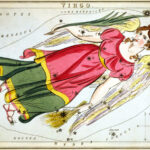 by Geoffrey BallingerA mutable earth sign serving as both the exaltation and domicile of Mercury, the Maiden extols the virtues of practicality, fastidiousness, and support, lending her considerable analytical talents to whatever job is at hand
by Geoffrey BallingerA mutable earth sign serving as both the exaltation and domicile of Mercury, the Maiden extols the virtues of practicality, fastidiousness, and support, lending her considerable analytical talents to whatever job is at hand by Geoffrey BallingerShaped by elements of Christian and ancient Greek thought, the Elizabethan worldview envisioned the universe as a balance between heavenly order and sinful chaos, with man the pivotal link in the chain of being.
by Geoffrey BallingerShaped by elements of Christian and ancient Greek thought, the Elizabethan worldview envisioned the universe as a balance between heavenly order and sinful chaos, with man the pivotal link in the chain of being.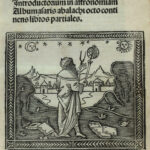 by Geoffrey BallingerInitially a student of the sayings of the Prophet Muhammed, Abu Ma’shar went from prominent skeptic to one of Islam’s greatest Medieval astrologers and was responsible for preserving and synthesizing both Persian and Hellenistic techniques and philosophies.
by Geoffrey BallingerInitially a student of the sayings of the Prophet Muhammed, Abu Ma’shar went from prominent skeptic to one of Islam’s greatest Medieval astrologers and was responsible for preserving and synthesizing both Persian and Hellenistic techniques and philosophies.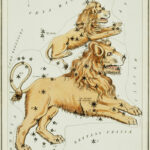 by Geoffrey BallingerEndowed with the heat of the summer Sun, the fixed fire sign of Leo shines through leadership and unique self-expression, although the regal Lion may succumb to vanity and dogma.
by Geoffrey BallingerEndowed with the heat of the summer Sun, the fixed fire sign of Leo shines through leadership and unique self-expression, although the regal Lion may succumb to vanity and dogma. by Geoffrey BallingerA hard shell, grasping claws and cautious approach protect the gentle, receptive interior of Cancer, the cardinal water sign. But it is the Moon-ruled sign’s symbolic relationship to the Sun and the nourishing role of emotional care that reveal its essential nature.
by Geoffrey BallingerA hard shell, grasping claws and cautious approach protect the gentle, receptive interior of Cancer, the cardinal water sign. But it is the Moon-ruled sign’s symbolic relationship to the Sun and the nourishing role of emotional care that reveal its essential nature.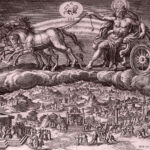 by Alexandre DiasSitting on its throne in the heavens, the Sun’s movement designates day and night, light and dark, winter and summer, truth and lies, carving the ecliptic, the basis of the zodiac and the art of astrology, across the sky.
by Alexandre DiasSitting on its throne in the heavens, the Sun’s movement designates day and night, light and dark, winter and summer, truth and lies, carving the ecliptic, the basis of the zodiac and the art of astrology, across the sky.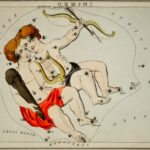 by Geoffrey BallingerMentally agile and curious, the mutable, Mercury-ruled air sign of Gemini gathers information, synthesizes, and reports. But at its mythological roots, this sign’s capacity to be two things at once reveals the unifying power of companionship.
by Geoffrey BallingerMentally agile and curious, the mutable, Mercury-ruled air sign of Gemini gathers information, synthesizes, and reports. But at its mythological roots, this sign’s capacity to be two things at once reveals the unifying power of companionship. by SatyaSaturn turns retrograde early this month and Mercury turns direct. Both Mercury and Venus transiting Gemini and in a sextile aspect to the greater benefic Jupiter make this a very social month.
by SatyaSaturn turns retrograde early this month and Mercury turns direct. Both Mercury and Venus transiting Gemini and in a sextile aspect to the greater benefic Jupiter make this a very social month.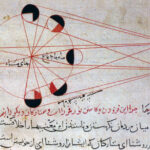 by Geoffrey BallingerAs the newly formed Muslim caliphate extended beyond the Arabian Peninsula, it encountered Persian, Hellenistic, and Indian forms of astrology, integrating them into a refined science that would reach its medieval peak in Baghdad, a city whose fortune and fate would be foretold by the stars.
by Geoffrey BallingerAs the newly formed Muslim caliphate extended beyond the Arabian Peninsula, it encountered Persian, Hellenistic, and Indian forms of astrology, integrating them into a refined science that would reach its medieval peak in Baghdad, a city whose fortune and fate would be foretold by the stars.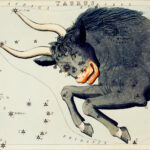 by Geoffrey BallingerThe fixed earth sign of Taurus represents the forward momentum of spring, with its placid nature and capacity for creation. But while the Bull’s impulse is toward taking root and building, if its Venusian peace is disturbed it can become a destructive force not to be trifled with.
by Geoffrey BallingerThe fixed earth sign of Taurus represents the forward momentum of spring, with its placid nature and capacity for creation. But while the Bull’s impulse is toward taking root and building, if its Venusian peace is disturbed it can become a destructive force not to be trifled with. by SatyaJupiter ingresses into Aries in May, setting up a generosity with Mars in Pisces that leads to the ominous May 16 total lunar eclipse along with a retrograde Mercury.
by SatyaJupiter ingresses into Aries in May, setting up a generosity with Mars in Pisces that leads to the ominous May 16 total lunar eclipse along with a retrograde Mercury.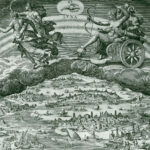 by Alexandre DiasAs the luminary that rules the night, the Moon represents change, travel, the emotional or irrational soul and feminine energy, but its significations depend on its condition in the sky and its proximity to the earthly sphere.
by Alexandre DiasAs the luminary that rules the night, the Moon represents change, travel, the emotional or irrational soul and feminine energy, but its significations depend on its condition in the sky and its proximity to the earthly sphere.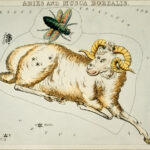 by Geoffrey BallingerFilled with the vitality of spring, Aries is the sign of new beginnings. While the Ram rushes forward to meet any challenge head-on, the flame of this cardinal fire sign peters out just as quickly as it is lit.
by Geoffrey BallingerFilled with the vitality of spring, Aries is the sign of new beginnings. While the Ram rushes forward to meet any challenge head-on, the flame of this cardinal fire sign peters out just as quickly as it is lit. by SatyaJupiter makes his first appearance in the eastern sky in April and, with Venus also in Pisces, compassion and sensitivity are heightened this month. At the end of the month, we see the bound of Mercury/Taurus activated by the year’s first solar eclipse.
by SatyaJupiter makes his first appearance in the eastern sky in April and, with Venus also in Pisces, compassion and sensitivity are heightened this month. At the end of the month, we see the bound of Mercury/Taurus activated by the year’s first solar eclipse. by Alexandre DiasA lawyer turned astrologer turned devout Christian, Firmicus Maternus penned the eight-book Mathesis, one of the lengthiest extant works on Hellenistic astrology in Latin, giving sixteen centuries of readers insight into astrological practices during the Roman Empire.
by Alexandre DiasA lawyer turned astrologer turned devout Christian, Firmicus Maternus penned the eight-book Mathesis, one of the lengthiest extant works on Hellenistic astrology in Latin, giving sixteen centuries of readers insight into astrological practices during the Roman Empire. by Geoffrey BallingerKnow to the Arabs as “Al-Rumi”, Vettius Valens gained near-mythical status in the East while his fame was largely eclipsed by Ptolemy in the West but his Anthologies remains the most important source contemporary readers have for the foundations and techniques of Hellenistic astrology.
by Geoffrey BallingerKnow to the Arabs as “Al-Rumi”, Vettius Valens gained near-mythical status in the East while his fame was largely eclipsed by Ptolemy in the West but his Anthologies remains the most important source contemporary readers have for the foundations and techniques of Hellenistic astrology. by SatyaAfter disappearing below the horizon for six weeks, Saturn will make a heliacal rising early this month in the sign of Aquarius. Read on to learn all the major action happening in the March skies.
by SatyaAfter disappearing below the horizon for six weeks, Saturn will make a heliacal rising early this month in the sign of Aquarius. Read on to learn all the major action happening in the March skies.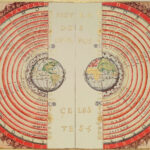 by Geoffrey BallingerThe works of Hellenistic polymath Ptolemy of Alexandria outlined the Western view of the cosmos that would survive until the Copernican revolution and defined the rational-causal view of astrology still largely ascribed to today.
by Geoffrey BallingerThe works of Hellenistic polymath Ptolemy of Alexandria outlined the Western view of the cosmos that would survive until the Copernican revolution and defined the rational-causal view of astrology still largely ascribed to today.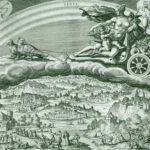 by Alexandre DiasBeauty, pleasure, and love: the incarnation of the Greco-Roman goddess of love, Venus, the Lesser Benefic brings joy to the life of the native if well-placed, and over-indulgence if ill-aligned.
by Alexandre DiasBeauty, pleasure, and love: the incarnation of the Greco-Roman goddess of love, Venus, the Lesser Benefic brings joy to the life of the native if well-placed, and over-indulgence if ill-aligned.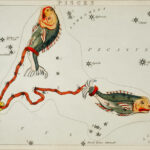 by Geoffrey BallingerSensitive and spiritually magnanimous, watery Pisces is represented by two fish bound by a cord, representing the duality implicit in this mutable sign.
by Geoffrey BallingerSensitive and spiritually magnanimous, watery Pisces is represented by two fish bound by a cord, representing the duality implicit in this mutable sign.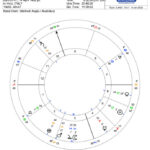 by SatyaMounting the copper orb on Florence Cathedral’s dome, a sodomy charge and a letter from Milan’s ambassador help to ascertain Leonardo da Vinci’s exact birth time.
by SatyaMounting the copper orb on Florence Cathedral’s dome, a sodomy charge and a letter from Milan’s ambassador help to ascertain Leonardo da Vinci’s exact birth time.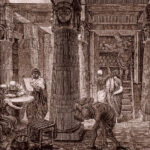 by Geoffrey BallingerMerging Babylonian star worship with indigenous Egyptian astronomy and Greek mathematics and philosophy, Hellenistic astrologers crafted the fourfold technical structure of astrology that weathered two millennia to survive as the foundational elements of modern astrology today.
by Geoffrey BallingerMerging Babylonian star worship with indigenous Egyptian astronomy and Greek mathematics and philosophy, Hellenistic astrologers crafted the fourfold technical structure of astrology that weathered two millennia to survive as the foundational elements of modern astrology today.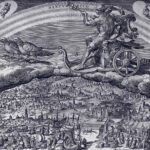 by Alexandre DiasSpeedy and unpredictable, the twinkling planet Mercury has long represented reason, commerce, and the pursuit of knowledge, and is distinct in its openness to the influence of other heavenly bodies.
by Alexandre DiasSpeedy and unpredictable, the twinkling planet Mercury has long represented reason, commerce, and the pursuit of knowledge, and is distinct in its openness to the influence of other heavenly bodies.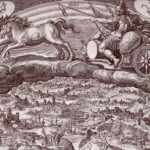 by Alexandre DiasMars, the blood-red warrior, blazes across the night sky, the harbinger of death, destruction, and strife. But the lesser malefic is not all bad: if dignified, the martial planet becomes the protector of the weak, the signifier of a courageous struggle, a victory against all odds that brings many rewards.
by Alexandre DiasMars, the blood-red warrior, blazes across the night sky, the harbinger of death, destruction, and strife. But the lesser malefic is not all bad: if dignified, the martial planet becomes the protector of the weak, the signifier of a courageous struggle, a victory against all odds that brings many rewards. by Geoffrey BallingerAs the Roman Empire rose, absorbing the trappings of Hellenistic culture, one writer penned the oldest surviving complete treatise on the art of astrology. Part poetics, part mathematics, Manilius’ Astronomica offers a glimpse of the core concepts and Stoic philosophy underlying both Hellenistic astrology and the beginning of modern Western science.
by Geoffrey BallingerAs the Roman Empire rose, absorbing the trappings of Hellenistic culture, one writer penned the oldest surviving complete treatise on the art of astrology. Part poetics, part mathematics, Manilius’ Astronomica offers a glimpse of the core concepts and Stoic philosophy underlying both Hellenistic astrology and the beginning of modern Western science. by Alexandre DiasIn the Roman Empire, knowledge of the stars could get you killed—or help you kill others. Discover how the science of reading the heavens became a powerful political tool in the Roman world.
by Alexandre DiasIn the Roman Empire, knowledge of the stars could get you killed—or help you kill others. Discover how the science of reading the heavens became a powerful political tool in the Roman world.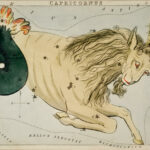 by Geoffrey BallingerThe profound wisdom of Ea, the ancient “antelope of the ocean”, and the influence of rule-loving Saturn give this sign its staid and hardworking nature as the steadfast Capricorn climbs ever higher up the mountain peak of life.
by Geoffrey BallingerThe profound wisdom of Ea, the ancient “antelope of the ocean”, and the influence of rule-loving Saturn give this sign its staid and hardworking nature as the steadfast Capricorn climbs ever higher up the mountain peak of life.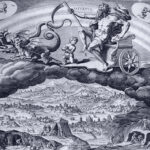 by Alexandre DiasThe cold, dry ruler of Aquarius and Capricorn, the furthest of the visible planets represents limits and strife, the march of time, and the inevitability of death. But, when faced with dignity, even the darkest saturnine theme has the potential to teach profound lessons.
by Alexandre DiasThe cold, dry ruler of Aquarius and Capricorn, the furthest of the visible planets represents limits and strife, the march of time, and the inevitability of death. But, when faced with dignity, even the darkest saturnine theme has the potential to teach profound lessons. by SatyaAs the house on the eastern horizon, the first house concerns the vitality and primary motivations of the native, with planets in the first house, the houses they rule, and the placement of the ruler of the first house unlocking everything from a native’s physical characteristics to the expression of their talents.
by SatyaAs the house on the eastern horizon, the first house concerns the vitality and primary motivations of the native, with planets in the first house, the houses they rule, and the placement of the ruler of the first house unlocking everything from a native’s physical characteristics to the expression of their talents.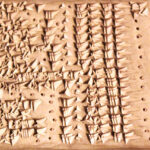 by Geoffrey BallingerOver three millennia ago, Mesopotamian scholar-scribes recorded the path of the heavenly bodies across the sky to decipher omens from the gods, laying the foundation for what would become Hellenistic astrology.
by Geoffrey BallingerOver three millennia ago, Mesopotamian scholar-scribes recorded the path of the heavenly bodies across the sky to decipher omens from the gods, laying the foundation for what would become Hellenistic astrology.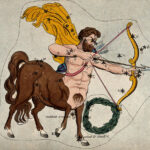 by Geoffrey BallingerLike the mutable flames of a wildfire, Sagittarius blazes through life with enthusiasm and curiosity, eschewing limits to exploration as the far-sighted Archer fixes their sights on a distant future.
by Geoffrey BallingerLike the mutable flames of a wildfire, Sagittarius blazes through life with enthusiasm and curiosity, eschewing limits to exploration as the far-sighted Archer fixes their sights on a distant future.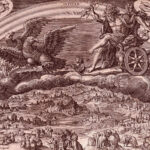 by Alexandre DiasMagnanimous, expansive, kingly: the Greater Benefic takes many of its qualities from its namesake Jupiter, the Greco-Roman king of the gods. Abundance is key to this sanguine planet, as is power, representing the native’s fortune and success but signifying despotic attitudes or wastefulness when poorly placed.
by Alexandre DiasMagnanimous, expansive, kingly: the Greater Benefic takes many of its qualities from its namesake Jupiter, the Greco-Roman king of the gods. Abundance is key to this sanguine planet, as is power, representing the native’s fortune and success but signifying despotic attitudes or wastefulness when poorly placed.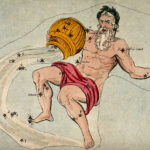 by Geoffrey BallingerFrom the flooded banks of the Nile to the brimming beaker of Science, the Water Bearer brings with it an impartial generosity and detached humanist perspective. But to reach its true potential, this fixed air sign must operate within its own structure, no matter how abstract.
by Geoffrey BallingerFrom the flooded banks of the Nile to the brimming beaker of Science, the Water Bearer brings with it an impartial generosity and detached humanist perspective. But to reach its true potential, this fixed air sign must operate within its own structure, no matter how abstract.